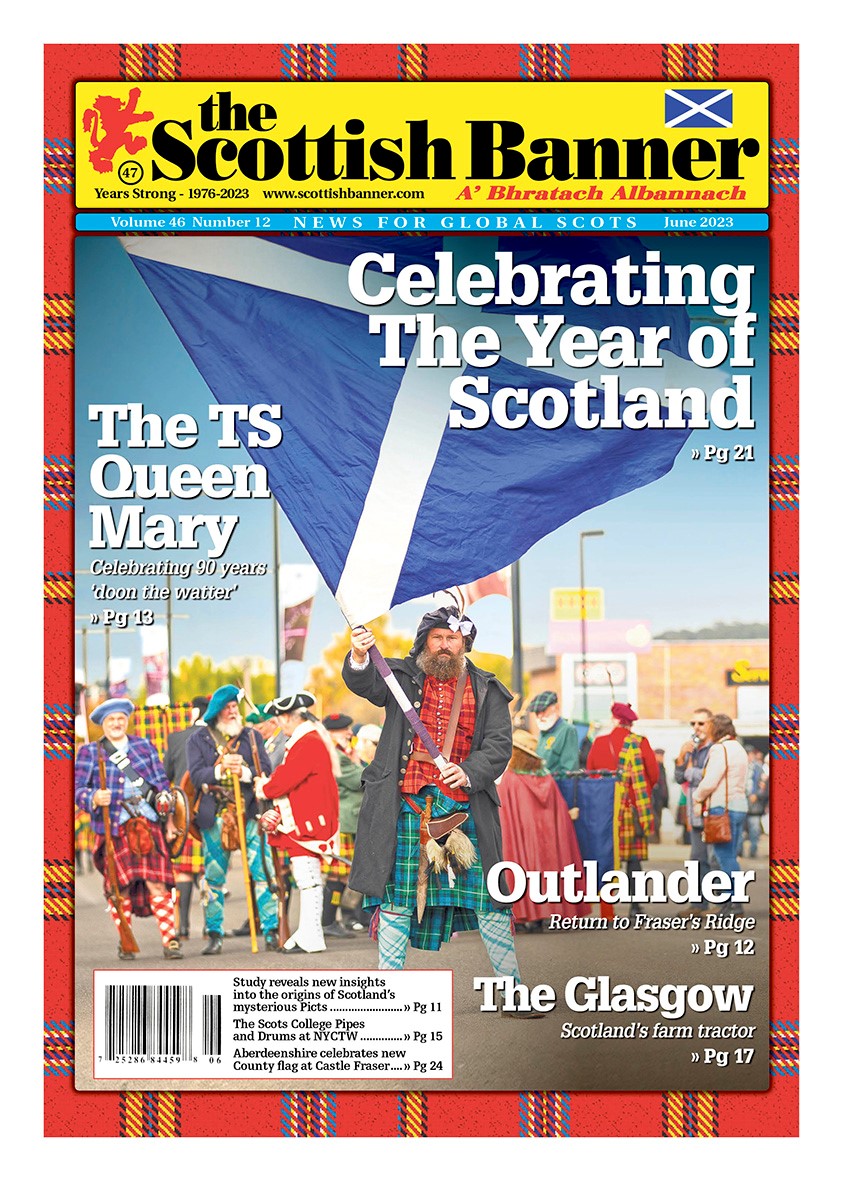June – 2023 (Vol. 46, Number 12)
-

Celebrating the Year of Scotland. Photo: Jim Barker, Twelve Points Photography and the Australian Celtic Festival.
The Banner Says…
The Common Ridings- Steeped in Scottish Tradition
This month sees the return of a very unique and historic Scottish Borders tradition, the Common Ridings, which also happens to be one of the world’s oldest equestrian festivals. The Return to the Ridings is a celebration of the riding of the boundaries that has taken place for centuries with eleven towns in the Scottish Borders using horses for the traditional ride out.
Border badlands
Common Ridings can be traced back over 900 years when the ‘border badlands’ were in constant disruption during the long wars with England and because of the tribal custom of looting and cattle thieving, known as reiving (the ancient Scots word for theft) that was commonplace amongst the major Borders families.
Reivers could well steal not only from the nearby English but from their own Scottish neighbours. Perhaps your ancestors were reivers who terrorised the border between England and Scotland? Armstrong, Elliot, Graham, Irvine, Johnstone, Kerr, Maxwell, Nixon and Scott were among the lawless families who rode, feuded, fought and pillaged over the wild tribal borders area for 350 years. During these lawless and turbulent times, townspeople would ride their boundaries, or ‘marches’, to protect their common lands and prevent encroachment by neighbouring landlords. As more peaceful and settled times came, the ridings ceremony remained in the border region in honour of local legend, history and tradition.
Historic equestrian pageants
The Hawick Common Riding is the first of the Border festivals and celebrates both the capture of an English flag in 1514 in Hornshole by some young Hawick locals and the ancient custom of riding the marches or boundaries of the common land. Each of the eleven towns puts their own local tradition and spin on these historic equestrian pageants today, which take place from June to August each year. The Selkirk Common Riding, which takes place mid-June, is recognised as one of the oldest of the Border festivals which goes back in history to 1113, when David I wanted to establish an abbey at Selkirk, the first abbey ever for the Scottish Borders.
Today the colourful spectacle, considered one of the top annual events in the Scottish Borders, is witnessed by people from across the world who take in the stunning display of horsemanship, pageantry and tradition by hundreds of riders at a time. The riders are saddled up along the routes often used by their ancestors in celebration of their history, and the lawless disputed lands, we all now know as the gentle and peaceful Scottish border region.
In this issue
Earlier this year I was on a walk around Glasgow and stumbled upon the TS Queen Mary moored by the Glasgow Science Centre. While it was all boarded up when I was there, I was very happy to see her proudly resting on the Clyde. The iconic Clydebuilt ship is celebrating 90 years this year, the anniversary was in fact just before this issue was released. The Queen Mary was known as ‘Britain’s finest pleasure steamer’ and hosted many famous people. Thankfully the vessel is being restored so future generations know what it is like to go ‘doon the watter’.
If you have travelled much in Scotland, you will certainly have seen farms amongst the stunning scenery. If like me, you may have not known that Scotland once produced its very own tractor to plough those soggy Scottish fields. The Glasgow tractor billed itself as the ‘most scientifically accurate tractor on earth’, it was short lived unfortunately at just five years as it could not compete on price with US imports.
The recent coronation of King Charles saw the Stone of Destiny moved from Edinburgh Castle to London’s Westminster Abbey. It was quite an operation transporting the 125kg/275lb. stone, which is now back on display in Edinburgh. The historic stone will now remain there until it is moved to Perth, as part of the new City Hall Museum, opening in 2024. Our very own, and long-time contributor, Lady Fiona MacGregor was fortunate to be at the coronation and this month gives us some insights from this historic event.
Safe Oot, Safe In
The Scottish Borders are a real gem of Scotland and I always know when I reach Scotland, if travelling from England by train. Not by a sign or monument but the green and lush rolling hills and landscape that starts to draw you in as the beauty of Scotland begins to present itself.
The region is certainly diverse with some fantastic historic sites, stunning rural scenery and a rich history in textiles and agriculture. Clearly the ‘Border Badlands’ have been relegated to the history books and we thankfully have the picturesque and easily accessible region of Scotland ready for us to explore and discover. Should you be attending the Common Ridings this summer, or just Scotland itself, I wish you a ‘Safe Oot – Safe In’ (a well-known Borders saying, wishing mounted riders a safe journey).
Have you visited the Scottish Borders region? Do you have any favourite Scottish traditional events you like to attend? Do you have you any comments from the content in this month’s edition? Share your story with us by email, post, social media or at: www.scottishbanner.com/contact-us
#ScottishBanner, #TheBanner
The Scottish Banner is more reliant than ever on our readers helping us to provide you with our unique content by buying a copy of our publication, regardless if by print or digital subscription or at a retail outlet.
We appreciate your support and hope you enjoy this edition.
